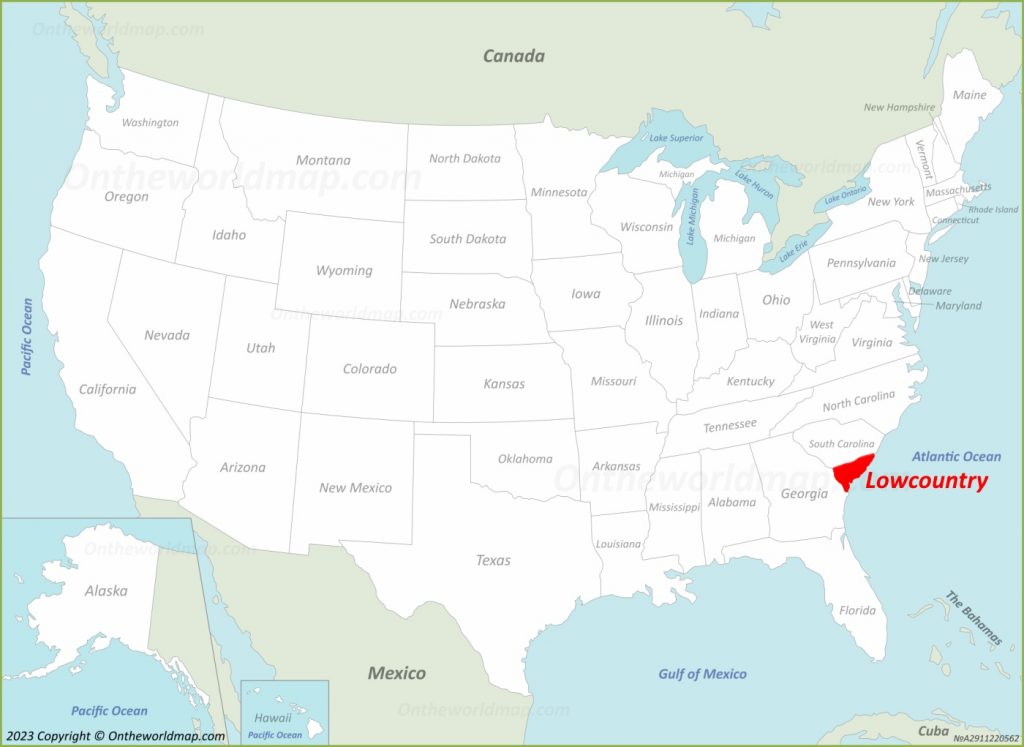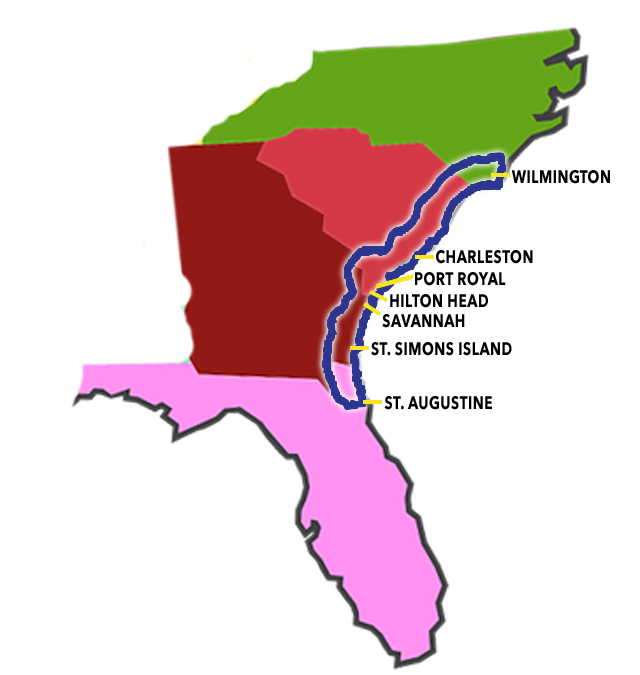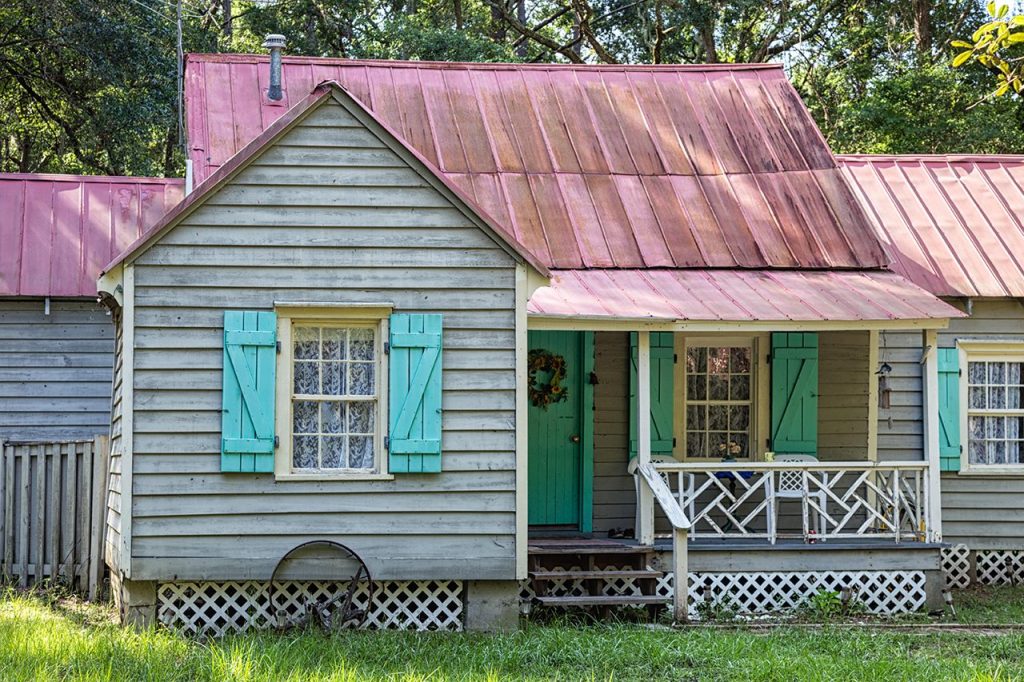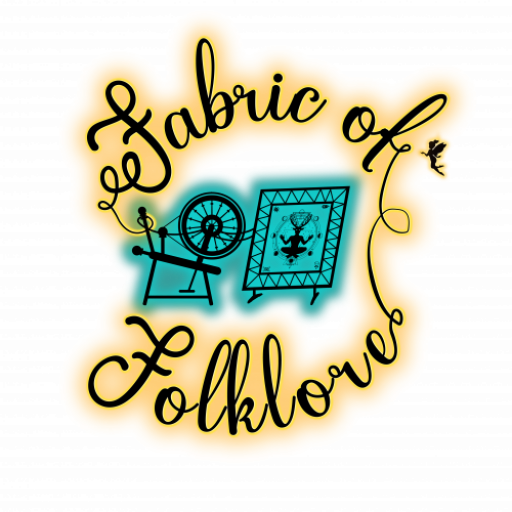Along the coastline of the SouthEastern swath of America, resides a resilient people, the Gullah (from S. Carolina), and the Geechee (from Georgia), sometimes referred to as the Gullah-Geechee. Both groups of people are descendants of enslaved West Africans brought over and forced to work the rice and indigo plantations in South Carolina, Georgia and Florida, now referred to as The Gullah Geechee Cultural Heritage Corridor, as determined by Congress in 2006. The Gullah and Geechee culture within the sea islands has retained ethnic traditions and folklore from West Africa since the mid-1700s.


I was intrigued by the Gullah’s unique and incredible heritage traditions after hearing the story of the Boo Hag in episode 28 by Brandon Schexnayder. The Boo Hag is a folktale originating from the Gullah culture of South Carolina, of a gruesome, skinless, energy vampire that sucks the life out of its sleeping victims. The folktale, its people, their history, and their use of haint blue as a protective charm intrigued me, and I wanted to learn more.
“This particular tradition, this piece of folklore is less a story and more folklore. It’s more a creature, if you will, from the Gullah culture out in the low country, South Carolina, of course Charleston, Savannah, all up and down the East Coast. Essentially, there were African people, brought from the Ivory Coast to come and farm on the Sea Islands out there off the East Coast …They put them out of there on all these islands almost entirely unsupervised in a lot of ways. So you have a very isolated community that had this ability to maintain parts of its original culture. They were from all different places in Africa, their culture even in amongst themselves differed, but a new culture was born and the Gullah-Geechee culture is still very much a part of Charleston and very much a part of Savannah and those sea Islands.”
Brandon Schexnayder (Episode 28)
The Origins of Gullah Culture
The Gullah culture emerged primarily among the descendants of enslaved Africans who were brought from a multitude of cultures and diverse linguistical backgrounds. But they forged a new identity through their difficult trials of slavery, and the merging of different traditions and practices.
One of the most remarkable aspects of Gullah culture is its resilience in maintaining its cultural heritage. Isolated on the Sea Islands and surrounded by swampy, mosquito-infested areas, Gullah communities developed their own distinct languages, foodways, folklore, and religious practices. This isolation helped preserve their African folklore in ways that are difficult to find elsewhere in the United States.
Unique Qualities of Gullah Culture
- Language: One of the most striking features of Gullah-Geechee culture is its language. The Gullah people developed a creole language that incorporates elements of African languages, English, and various other influences. Gullah is a testament to the resilience of their African linguistic heritage.
- Gullah Cuisine: Gullah cuisine is celebrated for its rich and flavorful dishes, such as shrimp and grits, red rice, and the famous dish, “hoppin’ John.” The cuisine is a delicious reflection of the culture’s African roots blended with elements of Southern cuisine.
- Art and Music: Gullah culture is also known for its vibrant arts and music. The sweet melodies of spirituals, often sung during the days of slavery, have continued to resonate through Gullah communities. The vibrant and colorful art of the Gullah people is also celebrated for its unique storytelling through various forms, including basket weaving, quilting, and painting.
- Religious Practices: Gullah culture incorporates unique religious practices, blending elements of African spirituality and Christianity. Ring shouts, for example, are dynamic and rhythmic expressions of faith that have been passed down through generations.
Recent Distinctions of Gullah Culture
In recent years, Gullah culture has gained recognition and distinction for its cultural significance. Efforts to preserve and celebrate this unique heritage have garnered national and international attention. Some of the recent distinctions include:
- Gullah Geechee Cultural Heritage Corridor: Established in 2006, the Gullah Geechee Cultural Heritage Corridor is a National Heritage Area that stretches from North Carolina to Florida, encompassing the Gullah communities. This designation has facilitated preservation and celebration efforts.
- Festivals and Celebrations: Various festivals and celebrations, such as the annual Penn Center Heritage Days on St. Helena Island, South Carolina, and the Gullah Festival in Beaufort, South Carolina, have gained popularity, attracting visitors interested in experiencing Gullah culture firsthand.
Haint Blue: A Distinctive Cultural Tradition
One of the most intriguing aspects of Gullah culture is the use of “haint blue.” Haint blue is a specific shade of blue believed to repel evil spirits, known as “haints.” This practice is deeply rooted in West African spiritual traditions and has been carried forward by the Gullah people. You can find haint blue on the doors, shutters, and windows of many Gullah homes. This unique tradition not only adds a distinctive aesthetic to Gullah architecture but also symbolizes the enduring connection to African cultural practices.

“You need to take blue paint and you need to take this shade, this haint paint, blue paint and you need to cover it in every window, every door because she (the boo hag) can’t get through this paint.”
Brandon Schexnayder (episode 28)
While discussing this unique element of Gullah practices, I was reminded of episode 12 when author Helen Nde spoke to us about the African folklore of how the color blue came into the world and its important role in African culture, especially that of women’s empowerment.
Learning about cultures around the world such as the Gullah is a privilege and I am reminded that one reason we do this work at Fabric of Folklore is to help bridge gaps of knowledge. When we learn about people, different than ourselves, and learn about where they came from, we can marvel at their uniqueness but also find areas similarities. With this knowledge we can hopefully develop respect and understanding.
What do you find most intriguing about this culture? What are you taking away from this post?

